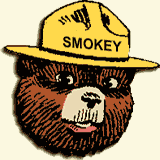Posted by kavery508 | Posted in Uncategorized | Posted on October 6, 2013
Reading Reading homework will begin Tuesday 11/15. This week we will practice filling in the reading log together in school. There is no expectation that the log (in the folder with the math homework) is done before that; however some of you have been having your child read at night or read with you at night, and that’s fine!
 RazKids is here (http://www.raz-kids.com )! For more information on this EXCELLENT site for kids and parents (including our classroom code and your child’s personal password) please read the notice I’m sending home on Monday.
RazKids is here (http://www.raz-kids.com )! For more information on this EXCELLENT site for kids and parents (including our classroom code and your child’s personal password) please read the notice I’m sending home on Monday.
This week’s comprehension focus is on learning to identify and use Nonfiction Text Features (photographs, captions, headings, diagrams, glossaries, etc.). This is another BIG strategy for kids to learn, especially with the increased use of informational text the Common Core State Standards require. As adults, we use them all the time to increase our understanding in as short a time as possible. Think of it: while at the doctor’s office, we pick up the only magazine that looks like it hasn’t been worn out. When looking for something to read, we’re drawn to titles, pictures, and captions that interest us and give us both an overview and details that support the main idea of an article. Headings help us activate our own schema as well as structure the information for us logically. Diagrams, maps, and charts present information in ways that help us understand. The same is true for nonfiction texts for kids, and we need to teach them to use these tools to come to a more complete understanding. More information can be found at This Reading Mama’s blog: http://thisreadingmama.com/comprehension/non-fiction/non-fiction-text-structure/. In addition, YouTube abounds with kids’ videos and songs (here’s just one): http://www.youtube.com/watch?v=8D6cq_-mV90. National Geographic for Kids is an excellent site where you and your child can practice at home: http://kids.nationalgeographic.com/kids/
Our Daily 5 instruction continues as we build stamina and learn to problem solve during Read to Others time. We will also learn to Listen to Reading. This is where students listen to someone read books (online) that they can’t really read. It’s a good way to improve their vocabulary and their understanding of what fluent reading sounds like. Of course, you help them do that every time you read aloud to them as well! Keep up that good work. More info: http://www.thedailycafe.com/public/department68.cfm Here’s an amateur site of read alouds; you can search for more professional ones too: http://www.justbooksreadaloud.com
Phonics focus: short u, -up -ut ug
 Math This week’s focus in on identifying pennies and nickels and how much each is worth. Kids at this age are just learning to think abstractly. They are also learning how it can be that one coin (nickel) is worth 5 of something (pennies). We’ll be playing lots of games where students have opportunities to trade in pennies for nickels. What’s important here aside from understanding this principle (conservation of number) is that students use the knowledge to help them count and add by 1s and 5s. At home, try making the concept into a game (one of the ways young kids learn best) by playing “Banker” or “Store.” The new and old backs of pennies and nickels can make it confusing for kids; still it’s best to use some of both until they get familiar with them!
Math This week’s focus in on identifying pennies and nickels and how much each is worth. Kids at this age are just learning to think abstractly. They are also learning how it can be that one coin (nickel) is worth 5 of something (pennies). We’ll be playing lots of games where students have opportunities to trade in pennies for nickels. What’s important here aside from understanding this principle (conservation of number) is that students use the knowledge to help them count and add by 1s and 5s. At home, try making the concept into a game (one of the ways young kids learn best) by playing “Banker” or “Store.” The new and old backs of pennies and nickels can make it confusing for kids; still it’s best to use some of both until they get familiar with them!
Writing Another big push in the Common Core is on Fact vs. Opinion writing. The eventual goal is to prepare students for college and career readiness by ensuring they can justify statements with evidence to support them. At this stage, we’re learning the difference between Fact and Opinion, and learning to explain our thinking in writing.
Science This week we will continue learning about skills of inquiry as we learn to ask questions and make predictions about rock specimens. How is one sample the same/different from another (classification)? What might happen to their properties when we change their systems from dry to wet? How could we design a process to test that out?
 Social Studies This week we are incorporating ideas about maps and communities as we learn about Fire Safety during Fire Prevention Week. With the help of Smokey the Bear (remember him?) and Sparky the Fire Dog we will explore how to be safe, what to do in case of fire, and how to make an escape map for home. This is an excellent time to review your child’s address and phone number in case of emergencies! More info at: http://www.nfpa.org/safety-information/fire-prevention-week/for-kids-and-families
Social Studies This week we are incorporating ideas about maps and communities as we learn about Fire Safety during Fire Prevention Week. With the help of Smokey the Bear (remember him?) and Sparky the Fire Dog we will explore how to be safe, what to do in case of fire, and how to make an escape map for home. This is an excellent time to review your child’s address and phone number in case of emergencies! More info at: http://www.nfpa.org/safety-information/fire-prevention-week/for-kids-and-families



